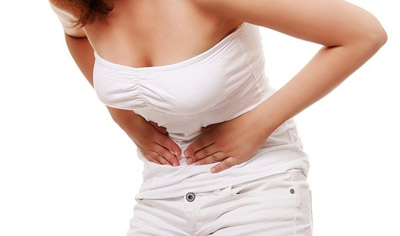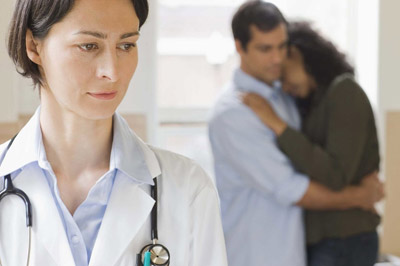 Many women and girls often wonder whether artificial insemination is possible in the presence of various types of hormonal diseases. And what to do if you have been diagnosed with PCOS (Polycystic Ovary Syndrome) or OHSS (Ovarian Hyperstimulation Syndrome). In this article, we will consider the likelihood of successful IVF in the presence of diseases of this type. But also, we will talk about the symptoms of these diseases and what treatment will help get rid of them.
Many women and girls often wonder whether artificial insemination is possible in the presence of various types of hormonal diseases. And what to do if you have been diagnosed with PCOS (Polycystic Ovary Syndrome) or OHSS (Ovarian Hyperstimulation Syndrome). In this article, we will consider the likelihood of successful IVF in the presence of diseases of this type. But also, we will talk about the symptoms of these diseases and what treatment will help get rid of them.
First, let's figure out what eco is. This type of artificial insemination differs from others in that an already fertilized egg, that is, an embryo, is placed in a woman's body. Thanks to this type of fertilization, many women have the opportunity to feel the joy of motherhood. But there are also cases when the presence of any negative syndromes after the IVF procedure can be a cause for concern. Among such diseases are spkya and sya. But, having consulted our clinic, many women were convinced that pregnancy with such diseases is possible. Professionals can develop a step-by-step treatment plan. Careful consultation will help ensure a safe and painless pregnancy, even with PCOS and OHSS syndromes that occur after IVF.
Artificial insemination and PCOS
 Now let's look at the symptoms that are the messengers of the disease. It belongs to the hormonal type and can manifest itself at any age. With this disease, a woman's ovaries enlarge due to the presence of water growths. As a result, there are problems with the maturation of eggs, which can lead to significant difficulties with conception.
Now let's look at the symptoms that are the messengers of the disease. It belongs to the hormonal type and can manifest itself at any age. With this disease, a woman's ovaries enlarge due to the presence of water growths. As a result, there are problems with the maturation of eggs, which can lead to significant difficulties with conception.
PCOS can be inherited or the result of being overweight.
So, as we noted above, the following symptoms can occur in women and girls at different ages:
- Excessive hair growth on the abdomen, chest, and face;
- Serious disruptions in the menstrual cycle;
- Severe hair loss;
- Deterioration of the condition of the skin, its oily content and the appearance of rashes;
- A sharp increase in body weight.
In our clinic, it is possible to carry out a comprehensive diagnosis of this disease using innovative technology. This will help to detect the disease as early as possible and fight it more effectively. The first stage of treatment is a thorough examination by a gynecologist-endocrinologist. This is necessary in order to determine how much the ovaries are enlarged and what measures need to be taken for treatment. Comprehensive treatment will help everyone make sure that pregnancy after PCOS is possible.
How to treat PCOS depends on each individual case. For example, with a very pronounced excess body weight, it is first necessary to normalize this indicator. Further, depending on the complexity of expressing the symptoms of PCOS, specialized drugs are prescribed for treatment.
Professional reproductive doctors will be able to diagnose a woman's body after treatment and determine all possible risks for pregnancy.
Ovarian hyperstimulation syndrome after IVF
Next, let's talk about another syndrome, which also often causes concern in patients. It's about OHSS, that is, ovarian hyperstimulation syndrome. This disease, like the PCOS described above, is another complication of the IVF procedure. This diagnosis can occur in early pregnancy, in particular in patients with low weight problems, for example, when the weight is less than 50 kg. The syndrome manifests itself as a reaction of the patient's body to the use of drugs to stimulate the ovaries. The latter are used to stimulate ovulation, the release of an egg from the ovary.
The first sign of this disease is ascites in any form. As a result, the abdomen may swell, which often forces patients to turn to gynecologists. The accompanying factors of ascites are nausea, vomiting, poor general health. Severe swelling of the legs is also common.
The treatment of sms is carried out in compliance with all the following norms:
- Regular monitoring of the patient's condition;
- Particular attention is paid to maintaining the water balance in the body;
- Ultrasound diagnostics;
- Prescribing drug therapy;
- Infusion therapy.
 Most often, it is the ultrasound method that is used to diagnose the disease. When conducting this examination, you can not only look at the size of the patient's ovaries, but also determine the amount of free fluid in the abdominal and pleural cavities.
Most often, it is the ultrasound method that is used to diagnose the disease. When conducting this examination, you can not only look at the size of the patient's ovaries, but also determine the amount of free fluid in the abdominal and pleural cavities.
When treating this disease, it is important to first identify the risk group. This group includes patients less than 35 years old, as well as those who have previously experienced the manifestation of this syndrome. Often this disease can be genetically inherent. The risk group includes a patient with a high level of estradiol in the blood or with a diagnosis of polycystic ovary disease.
If the patient begins to notice the first signs of OHSS, it is necessary to immediately consult a gynecologist. The fact is that the diagnosis and treatment of OHSS in the early stages is not a difficult process. It involves adjusting the patient's diet and changing some of the lifestyle habits that may have contributed to the development of the disease. Moderate and severe stages of OHSS require more serious procedures and the constant presence of the patient under the supervision of doctors.
For effective prevention of the onset of OHSS syndrome, it is necessary to strictly adhere to all the doctor's instructions. In particular, this applies to minimizing physical activity and stress.
Our clinic employs specialists with many years of experience in solving such problems. This allows you to effectively deal with any complications after the IVF procedure and ensure a safe pregnancy.
